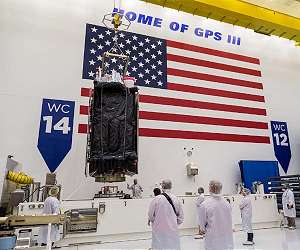GPS-enabled decoy eggs may help track, catch sea turtle egg
GPS-enabled decoy eggs could help authorities track sea turtle egg poachers and disrupt illegal wildlife trade networks.
In a proof-of-concept study, published Monday in the journal Current Biology, researchers placed 3D-printed, GPS-enabled decoy eggs in the nests of endangered sea turtles in Central America.
Using the ingeniously named InvestEGGator, scientists were able to track the contraband from the beach to restaurants and bars where the eggs are sold as a delicacy.
“Our research showed that placing a decoy into a turtle nest did not damage the incubating embryos and that the decoys work,” lead study author Helen Pheasey said in a news release.
“We showed that it was possible to track illegally removed eggs from beach to end consumer as shown by our longest track, which identified the entire trade chain covering 137 kilometers,” said Pheasey, conservation biologist and doctoral student at the University of Kent.
Researchers created the decoy for the Wildlife Crime Tech Challenge, a request for proposals issued by the United States Agency for International Development. USAID wanted participating groups to come up with technologies that could be used to combat wildlife poaching.
Researcher Kim Williams-Guillen, who works with the conservation organization Paso Pacifico and helped develop the decoy egg, said she was inspired by a pair of her favorite TV shows, Breaking Bad and The Wire.
“In Breaking Bad, the DEA places a GPS tracking device on a tank of chemicals to see who receives the chemicals,” Williams-Guillen said. “In one episode of The Wire, two police officers plant an audio device in a tennis ball to surreptitiously record a suspected drug dealer.”
“Turtle eggs basically look like ping pong balls, and we wanted to know where they were going — put those two ideas together and you have the InvestEGGator,” she said.
Researchers placed 101 decoy eggs in nests at four beaches in Costa Rica. More than a quarter of the fake eggs were stolen from nests, allowing researchers to track the path of stolen eggs from two green turtle nests and three olive ridley nests.
One egg made it to a residential property before the GPS signal went silent, while another’s journey ended at a local bar. One egg traveled 137 kilometers, from the beach inland to a supermarket loading bay, before being taken to a residential property.
The initial data suggests most stolen eggs aren’t taken too far from the beach. They’re traded and sold locally.
“Knowing that a high proportion of eggs remain in the local area helps us target our conservation efforts,” Pheasey said. “We can now focus our efforts on raising awareness in the local communities and direct law enforcement to this local issue. It also means we know where the consumers are, which assists us in focusing demand reduction campaigns.”
Researchers claim the key to combating the illegal wildlife trade is to find the traffickers and traders, which are often not the people taking eggs from nests. The GPS-enabled decoy eggs promise to help authorities do just that.
“As trafficking is a more serious crime, those handover points are far more valuable from a law enforcement perspective than catching someone taking a nest,” Pheasey said. “But, it really must be used in the context of a multi-pronged conservation approach that uses education, building better economic opportunities, and enforcement to help fight sea turtle egg poaching.”
Related Links
GPS Applications, Technology and Suppliers
|
We need your help. The SpaceDaily news network continues to grow but revenues have never been harder to maintain. With the rise of Ad Blockers, and Facebook – our traditional revenue sources via quality network advertising continues to decline. And unlike so many other news sites, we don’t have a paywall – with those annoying usernames and passwords. Our news coverage takes time and effort to publish 365 days a year. If you find our news sites informative and useful then please consider becoming a regular supporter or for now make a one off contribution. |
||
|
SpaceDaily Contributor $5 Billed Once credit card or paypal |
SpaceDaily Monthly Supporter $5 Billed Monthly paypal only |
|

![]()
Fourth GPS 3 Satellite Encapsulated Ahead of Launch
Cape Canaveral FL (SPX) Sep 30, 2020
The U.S. Space Force Space and Missile Systems Center’s Lockheed Martin-built GPS III Space Vehicle 04 (GPS III SV04) satellite was encapsulated within a SpaceX payload fairing at Astrotech Space Operations Florida facility on Sept. 21 in preparation for its upcoming launch on Sept. 29 from Cape Canaveral Air Force Station, Florida. The 15-minute launch window opens at 9:55 p.m. EDT.
Encapsulation of the satellite within the payload fairing protects the satellite from the impact of dynamic pressur … read more
